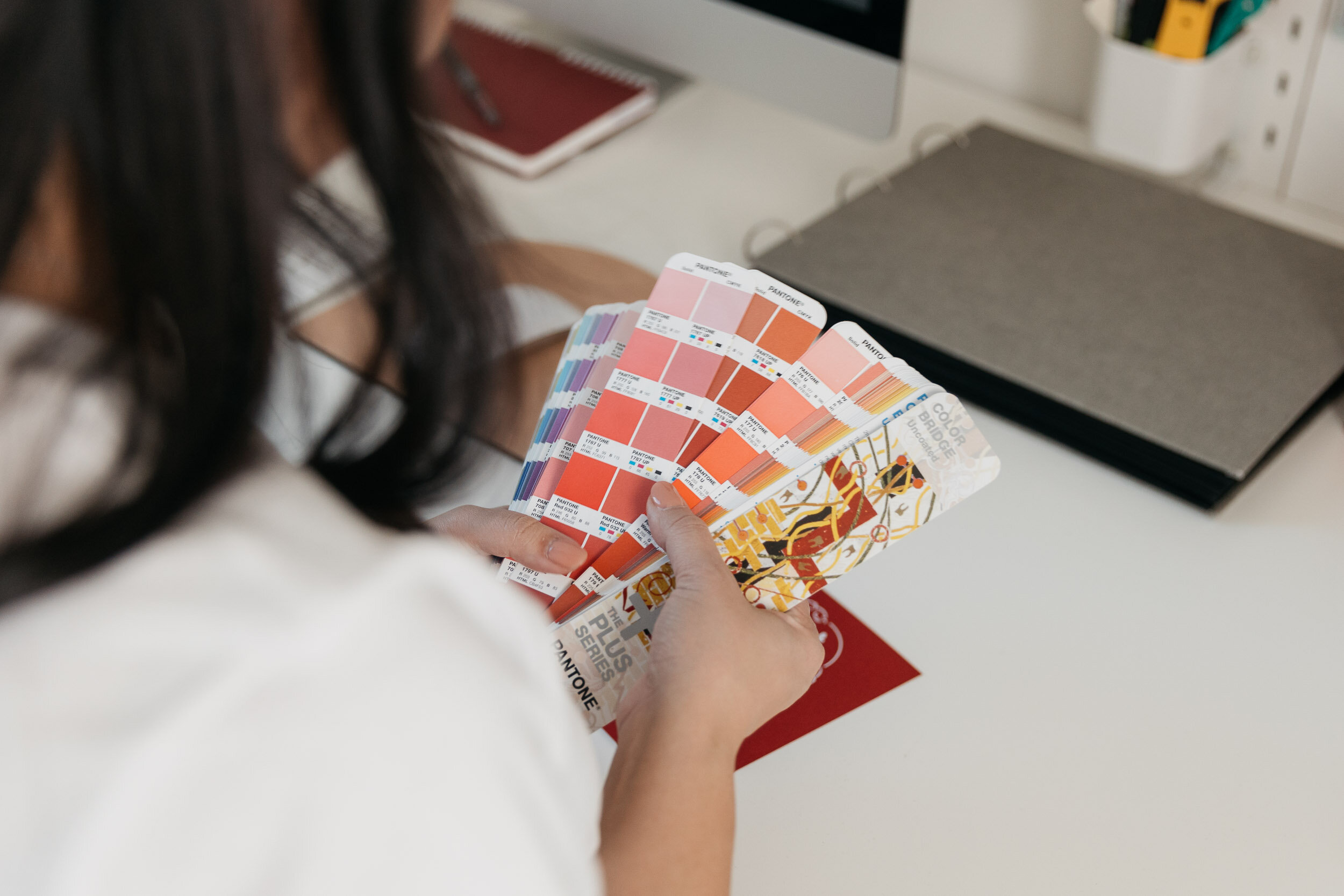
Resources
Where do you begin?
Understand the print processes
Digital CMYK
Digital printing, also known as 4 colour printing, is when CMYK ink cartridges are used. Because there’s no need for a printing plate (unlike offset printing), digital prints have a quick turnaround and are more cost effective. If you are on a tight budget, digital printing is the most economical choice for you. There is a minimum of 20 invites for digital printing.
Paper Thickness: Maximum advised is between 300-350gsm
Paper Color: Light coloured paper stocks.
Paper: Can be printed onto smooth, matte or even textured stocks, for full paper colour or image printing, we advice to print only on smooth stocks.
Price Range: $
Print time: 3-5 working days
White ink
White ink printing (also known as a specialty ink), uses the same method of digital printing that 4 colour printing does. Perfect for when you don't want to spend extra on foiling or letter press, a white ink print on darker shades of paper stock can add that little something special to your stationery. There is a minimum of 20 invites for white ink digital printing.
Paper Thickness: Maximum advised is between 300-350gsm
Paper Colour: : Darker colours, e.g. black, grey, burgundy, emerald green and many more
Paper: Can be printed onto smooth, matte or even textured stock
Price Range: $$
Print time: 3-5 working days
Letterpress
Letter press is a process by which a polymer plate is attached to the base of the letter press machine. The plate is then inked and pressed onto a surface (paper) to create an indentation which creates a 'raised' effect.
Paper Thickness: Up to 600gsm
Paper Color: Available in an array of colours.
Paper: There's a range of 100% cotton paper available in whites and off-whites. Letter press can also be done on plain matte paper stocks which has less of an organic feel.
Price Range: $$$
Print time: 7-10 working days
Foiling
Foil stamping is the application of pressing a heated plate (similar to letter press) on to metallic or pigmented foil on to a solid surface. Adding foil is a great way to make your invitations look premium and luxurious.
Paper Thickness: Up to 600gsm.
Foil Color: Available in a variety of colours, with common colours like gold, silver, copper and rose gold. Shades are also available in either a matte or shiny foil.
Paper: Matte and textured paper stocks are the best for foiling.
Price Range: $$$$
Print time: 7-10 working days
Photography by James Hendrix Photography
What about fonts?
Serif
Serif fonts refer to the 'tail' which is at the end of every line in each character.
Serif fonts have a reputation of looking very traditional and formal. Having said that, serif fonts always make an invite look timeless and sophisticated no matter the type of event.
San Serif
San serif fonts refer to having no 'tail' in each character.
San serif fonts typically look more modern and casual. The aesthetic of the font makes it more legible and is often used as a body text font.
Traditional Scripts
Script is often more decorative. It looks best in two styles, either a clean computer developed brush calligraphy or old school copperplate calligraphy (pictured).
Depending on the style of your event, we often recommend using a calligraphy font only for your headings, for e.g. the names on the invite. If used for too much text it becomes hard to read and can overpower the design.
Handwritten Scripts
The handwritten script is also quite popular among young couples. Each letter and alphabet are made to look inconsistent, like real handwriting, which gives a personalised and organic feel to the design.
Similar to traditional script, this should be reserved for headings.
Download our resources here
Stationery Timeline
Not sure when to action items for your wedding? Take a look at a draft we prepared.
Endless Colour Options
We offer a wide range of colours and paper stocks for you to choose from. Take a look!
Download our Sample Pack Book
Our sample pack booklet is a quick guide to your wedding stationery.
Need a hand with your guest list?
We’ve done the hard work and put together a quick Excel sheet you can use to keep track of your guest list. This will help us if you’re planning on personalising your items such as menus and place cards as well as envelopes with addresses.















